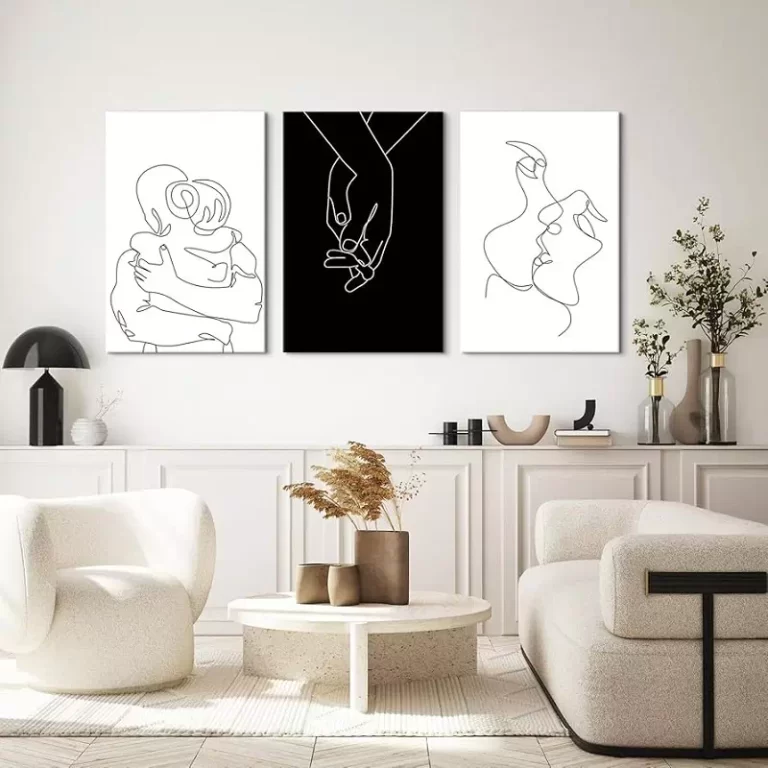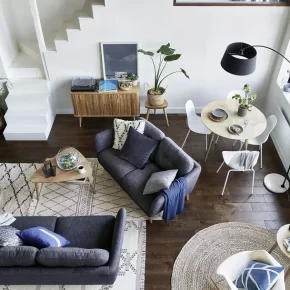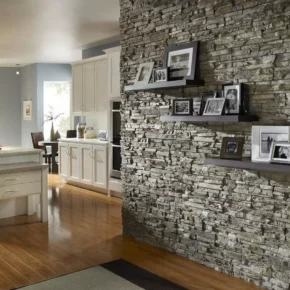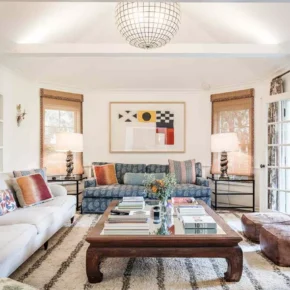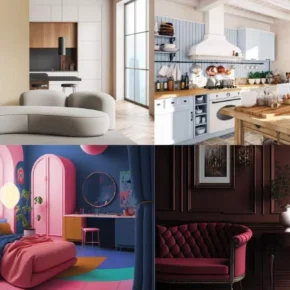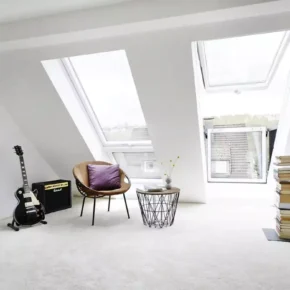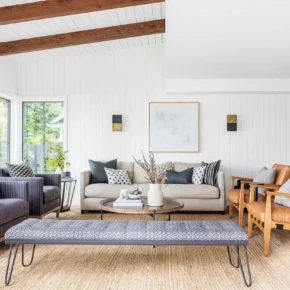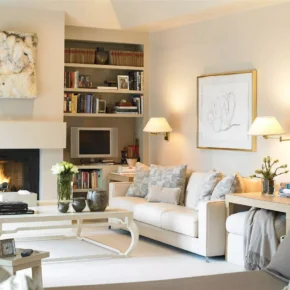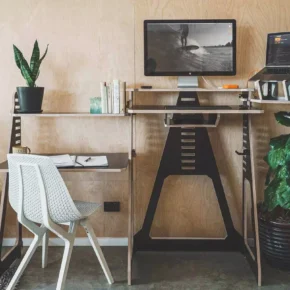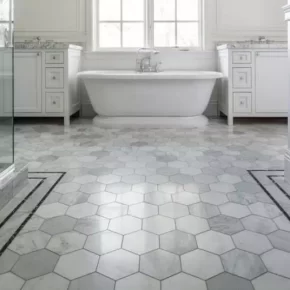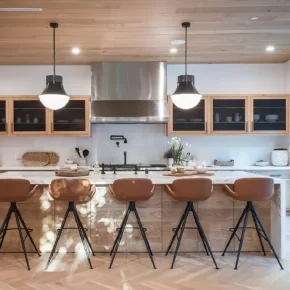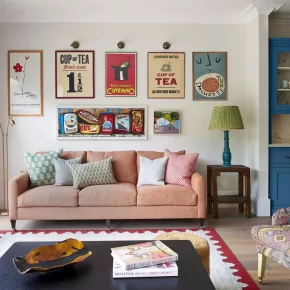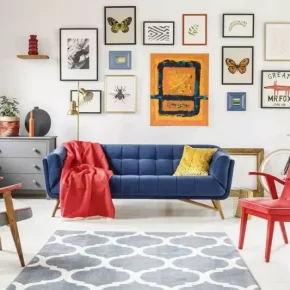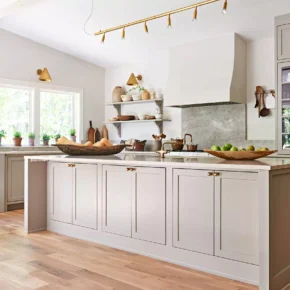Minimalism is a style that emphasizes simplicity, clean lines, and functionality. When choosing paintings and decorative elements for such an interior, it is important to follow the principle “less is more”.
In minimalism, every detail is important, so the decor should be carefully selected and harmoniously combined with the overall concept of the space.
Basic principles of choosing pictures for a minimalist interior

1. Simplicity of forms and composition
In a minimalist interior, pictures should not overload the space with complex details or bright colors. The optimal choice will be abstract works with pure geometric shapes or laconic images with a minimum of details. The simplicity of the composition will help preserve the harmony of the interior.
Tip : Choose paintings with plain or neutral color palettes that will organically fit into the space.
2. Limited number of colors
Minimalism is characterized by the predominance of neutral tones – white, gray, black, beige. Pictures for such an interior can contain only a few colors, preferably within the same range or with a slight emphasis on contrasting elements. Contrasting accents can add dynamics, but it is important not to overload the space.
Example : Black and white photos or abstract paintings using several colors are ideal for a minimalist interior.
3. Harmony with space
The picture should not only fit in style, but also correspond to the dimensions of the room. Large canvases look good in spacious rooms, while smaller formats or series of several paintings of the same size are suitable for small spaces. It is also important to correctly place the pictures on the wall so that they do not overload the space.
Tip : Choose one or two large paintings instead of many small ones to maintain a sense of space and lightness.
Selection of decorative elements in minimalism
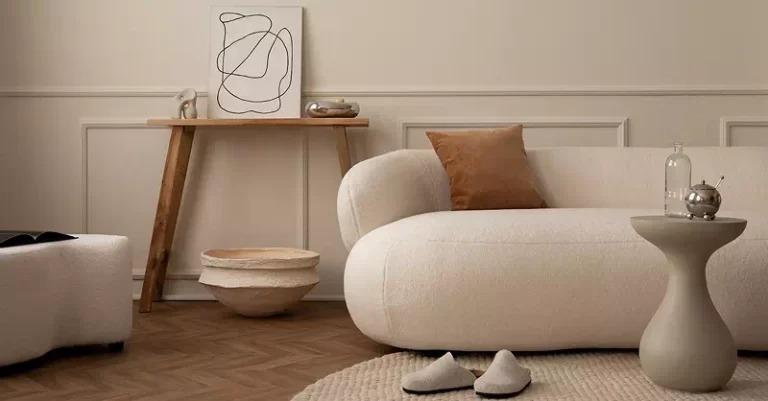
1. Functionality and minimalism
Each decorative element in a minimalist interior should not only decorate the space, but also perform a certain function. For example, decorative vases can be used for flowers, candlesticks for creating coziness, and blankets and pillows for convenience.
Example : Stylish wall clocks or decorative shelves are not only decorative, but also functional interior items.
2. Natural materials
Decorative elements made of natural materials – wood, stone, glass or metal – are ideal for a minimalist style. They add warmth and coziness, while not breaking the overall concept of simplicity.
Tip : Choose decorative elements with simple lines and natural textures, for example, wooden picture frames or ceramic vases.
3. Control of the number of decorative elements
Minimalism requires a minimum of decorations. Decorative elements should be chosen wisely: better less, but better quality. You should not clutter the space with numerous decorations, one or two accent elements are enough.
Example : One large piece of decor, such as a sculpture or an art object, can become a central detail in a room.
4. Decor with clear lines and geometry
Minimalism emphasizes clear lines and simple forms. Decor in the form of geometric shapes or objects with symmetrical lines will harmoniously fit into this style. For example, lamps or mirrors with geometric frames can be a great choice.
Tip : Choose furniture and decor with simple geometric shapes to keep the lines clean.
Examples of paintings and decorative elements for minimalism
- Abstract paintings with geometric shapes in neutral colors.
- Black and white photos in simple, thin frames.
- Transparent or frosted glass vases with plain dried flowers.
- Decorative pillows with minimalist patterns or solid color.
- Metal lamps in the form of clear geometric shapes.
- Small ceramic sculptures or vases with succulents in simple pots.
- Mirrors with thin metal frames or without them at all.
- Watches with a minimalist design and without unnecessary details.
Minimalism in interior design involves the use of paintings and decorative elements that emphasize the simplicity and functionality of the space. To achieve harmony, it is important to pay attention to concise forms, a limited number of colors and the functionality of each item. When choosing interior decor in the style of minimalism, focus on the fact that each element should bring not only aesthetic pleasure, but also serve as a practical solution for your home.

